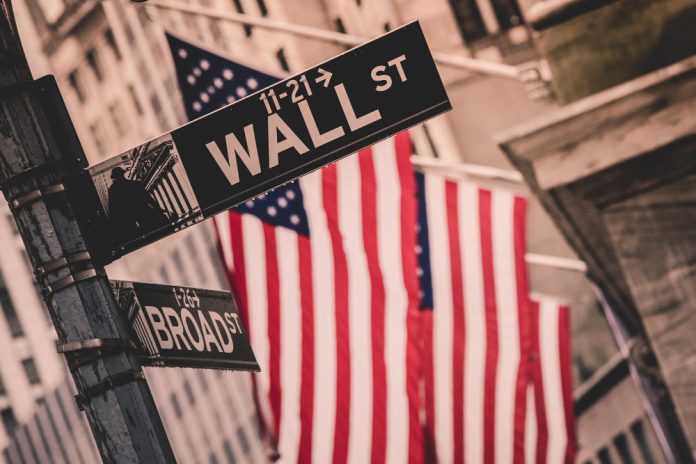The U.S. stock market rally continues as investors maintain hope that the economy can tame high inflation without triggering a recession. The S&P 500 is up 0.1% in early trading following its 42nd record close of the year. The Dow Jones Industrial Average also inches closer to its own all-time high, up 141 points (0.3%), and the Nasdaq Composite follows suit with a 0.1% rise.
This rally is driven by signs of easing inflation, as revealed in a report showing a greater-than-expected slowdown in August. This adds to a growing belief that the Federal Reserve (Fed) might successfully lower inflation without stalling the economy, a key factor in the bullish market sentiment.
The Federal Reserve’s Role in the U.S. Stock Market Rally
The Fed has played a central role in the ongoing U.S. stock market rally by maintaining its main interest rate at a two-decade high to slow the economy and bring inflation under control. With inflation substantially lower than its peak two summers ago, the Fed has gradually started cutting interest rates to support the slowing job market and avert a recession.
The Fed aims to achieve a “soft landing”—an economic scenario where inflation cools down without causing significant damage to growth. This approach, along with the rate cuts, has fueled investor optimism, pushing U.S. stocks to new highs.
A Delicate Balancing Act: Inflation, Spending, and Hiring
While the current outlook is optimistic, challenges remain. The U.S. job market is showing signs of slowing down, and August’s inflation report revealed that consumer spending grew at a slower rate than expected. Consumer spending is a key engine of the U.S. economy, so any prolonged weakness could affect overall growth.
Additionally, incomes for Americans in August grew less than anticipated. Although interest rate cuts generally reduce interest payments on savings and loans, it can take time for consumers to benefit from cheaper loans for homes, vehicles, and credit cards. Consequently, consumption spending may face pressure as the effects of rate cuts take time to materialize.
Brian Jacobsen, Chief Economist at Annex Wealth Management, commented that while lower interest rates will eventually stimulate the economy, the delayed effect means consumer spending could be “squeezed” in the short term.
U.S. Companies Impacted by Consumer Spending
Corporate earnings continue to be a focal point for investors in the U.S. stock market rally. For instance, Costco Wholesale (NASDAQ:COST) saw its stock dip 2.8% after reporting weaker revenue than analysts had forecast, despite surpassing profit expectations. Similarly, Vail Resorts (NYSE:MTN), a ski-resort operator, faced a 6.9% drop in its stock price following a larger-than-expected quarterly loss and a muted profit outlook due to low snowfalls at its Australian resorts.
Meanwhile, Trump Media & Technology Group, the parent company of Truth Social, witnessed a modest 0.4% decline after a significant investor sold shares following the lifting of insider restrictions. The investor, a Florida firm owned by former contestants of “The Apprentice,” has nearly exited its 5.5% stake in the company. This development comes as the stock has seen volatility, dropping from over $60 in March to under $14 amid speculation over potential share sales by former President Donald Trump, who still holds a majority interest.
Global Markets and the U.S. Stock Market Rally
Global markets have also played a role in shaping the U.S. stock market rally. Notably, the Chinese market experienced a surge, with the Shanghai Composite Index closing up 2.9%, marking its best week since 2008. The Hang Seng Index in Hong Kong similarly saw a 3.6% rise, ending its best week since 1998.
This rally in Chinese stocks followed a wave of stimulus measures announced by China’s central bank and government to support the world’s second-largest economy. Though investors are cautiously optimistic, given past piecemeal attempts, the sheer size of the stimulus is seen as a strong effort to reignite economic growth.
Additionally, stocks of some luxury retailers, copper prices, and companies that benefit from a strong Chinese economy have all seen gains over the week, buoying global market confidence.
Treasury Yields and Market Expectations
In the bond market, Treasury yields have also fluctuated in response to market expectations around the Fed’s interest rate policies. The yield on the 10-year U.S. Treasury bond dropped to 3.76% from 3.80% the previous day, while the 2-year Treasury yield, more closely tied to Fed policy expectations, decreased to 3.59% from 3.63%.
These shifts reflect ongoing market expectations that the Fed will continue to strike a delicate balance between controlling inflation and supporting economic growth, a key factor driving the ongoing U.S. stock market rally.









